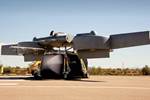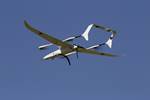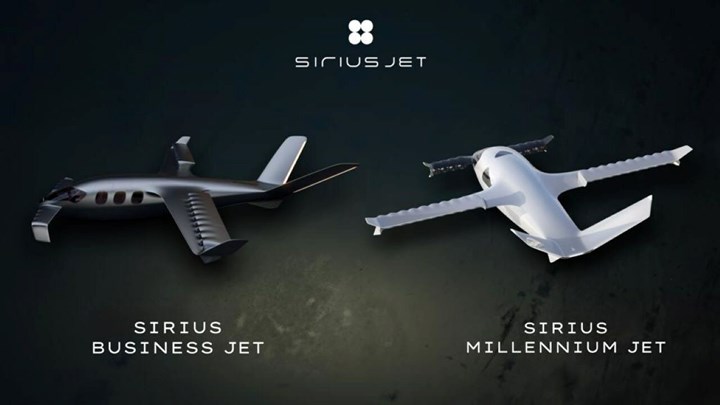Sirius Aviation reveals hydrogen VTOL aircraft, the Sirius Jet
Propelled by a hydrogen-electric propulsion system, the composites-intensive vehicle will take flight in two version options by 2025.
Swiss aviation startup Sirius Aviation AG (Zurich, Switzerland) has unveiled the Sirius Jet, a hydrogen-powered vertical takeoff and landing (VTOL) aircraft crafted and designed in collaboration with BMW’s (Munich, Germany) creative consultancy Designworks and motorsport engineering company Sauber Group, along with Alfleth Engineering AG and ALD Group.
According to Sirius Aviation’s CEO Alexey Popov, “Sirius Jet undoubtedly incorporates carbon fiber composites in its structure, along with aluminum, titanium alloys and steels. Announcing the exact proportion is premature at this stage, but the share of carbon fiber is quite significant. The fan blades also represent a combination of metals and composite materials.”
The Sirius Jet is a high-performance, zero-emission VTOL aircraft, propelled by a hydrogen-electric propulsion system. Leveraging jet aerodynamics with airplane and helicopter versatility, it achieves extended flight distances, high speeds and high altitudes at near-silent levels.
In 2025, the Sirius Jet will take flight in two versions: the Sirius Business Jet, tailored to private jet needs, and the Sirius Millennium Jet, crafted for commercial aviation. The former will feature a 1,150-mile flight range, cruise speed of 323 miles per hour (mph), altitude capability of 30,000 feet, ultra-quiet noise levels of 60 decibals and will be able to accommodate three passengers. The latter, the Sirius Millenium Jet, offers a 650-mile flight range, cruise speed of 323 mph, altitude capability of 30,000 feet, sound footprint of 60 decibals and will accommodate up to five passengers.
Related Content
-
Paris Air Show 2023 highlights
The Paris Air Show, one of the largest aerospace trade shows in the world, returned for the first time since 2019 and proved that the global aviation industry industry is very much alive and kicking.
-
Lilium launches M&A process, targets eVTOL program continuation
Despite court-approved insolvency filings and beginning first investor briefings, Lilium remains fully focused on re-emerging following restructuring, setting its sights on fresh investment to support the Lilium Jet.
-
Alef Aeronautics earns FAA approval to launch flying car
FAA certifies testing of California startup Alef’s all-electric composite vehicle, which is drivable on public roads and has VTOL capabilities.














